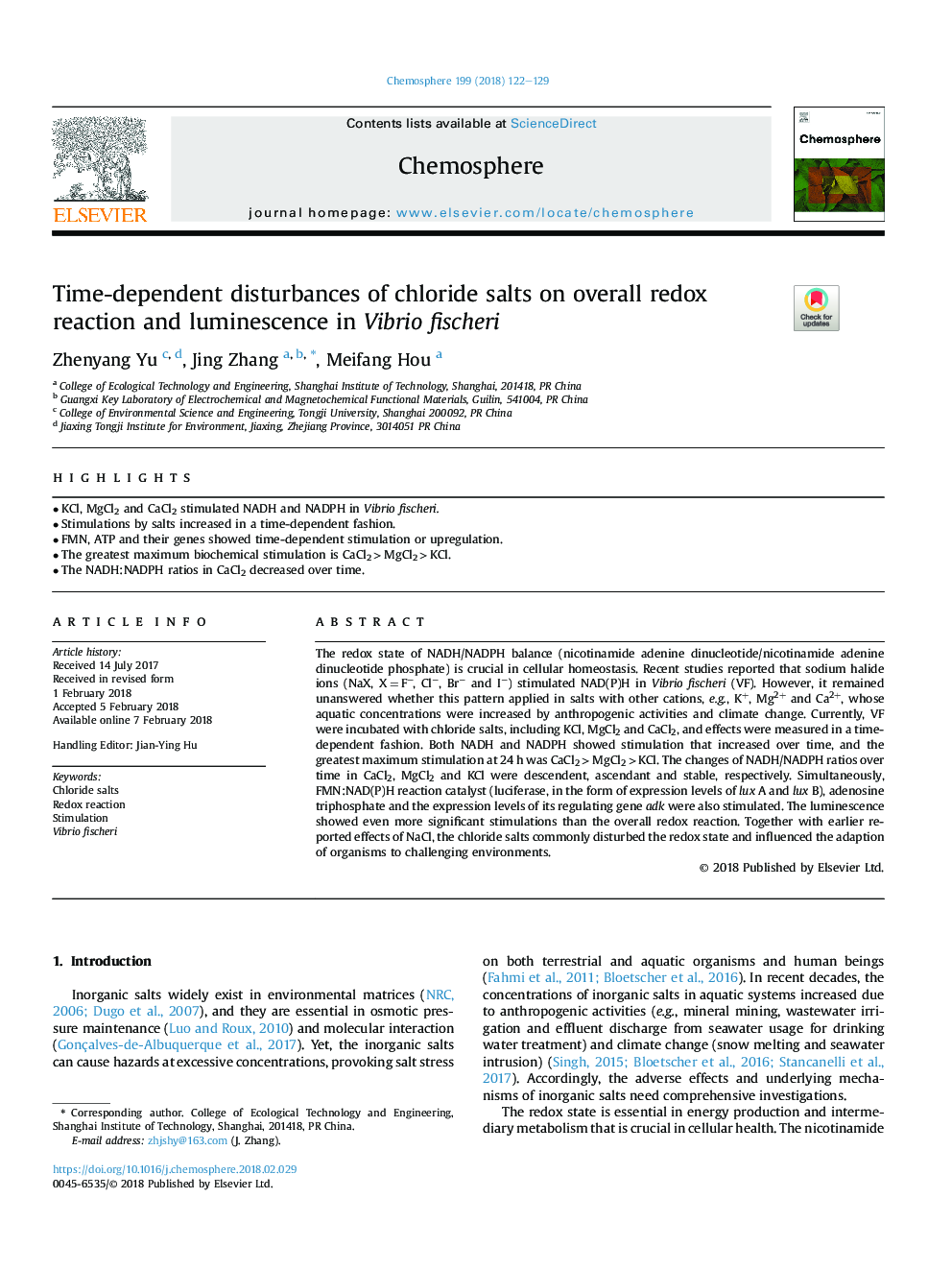| Article ID | Journal | Published Year | Pages | File Type |
|---|---|---|---|---|
| 8851764 | Chemosphere | 2018 | 8 Pages |
Abstract
The redox state of NADH/NADPH balance (nicotinamide adenine dinucleotide/nicotinamide adenine dinucleotide phosphate) is crucial in cellular homeostasis. Recent studies reported that sodium halide ions (NaX, Xâ¯=â¯Fâ, Clâ, Brâ and Iâ) stimulated NAD(P)H in Vibrio fischeri (VF). However, it remained unanswered whether this pattern applied in salts with other cations, e.g., K+, Mg2+ and Ca2+, whose aquatic concentrations were increased by anthropogenic activities and climate change. Currently, VF were incubated with chloride salts, including KCl, MgCl2 and CaCl2, and effects were measured in a time-dependent fashion. Both NADH and NADPH showed stimulation that increased over time, and the greatest maximum stimulation at 24â¯h was CaCl2â¯>â¯MgCl2â¯>â¯KCl. The changes of NADH/NADPH ratios over time in CaCl2, MgCl2 and KCl were descendent, ascendant and stable, respectively. Simultaneously, FMN:NAD(P)H reaction catalyst (luciferase, in the form of expression levels of lux A and lux B), adenosine triphosphate and the expression levels of its regulating gene adk were also stimulated. The luminescence showed even more significant stimulations than the overall redox reaction. Together with earlier reported effects of NaCl, the chloride salts commonly disturbed the redox state and influenced the adaption of organisms to challenging environments.
Related Topics
Life Sciences
Environmental Science
Environmental Chemistry
Authors
Zhenyang Yu, Jing Zhang, Meifang Hou,
